Much in the way Nepal Airlines serves as the national carrier of Nepal, Air India is the national carrier of India. We have discussed how politics destroyed the Nepal Airlines Corporation; this article similarly explores how politicians and ministers impact airline companies, and how this relates to the case of Air India. It examines the airline’s historical milestones, including its founding, the impact of nationalization, and the challenges it has faced.
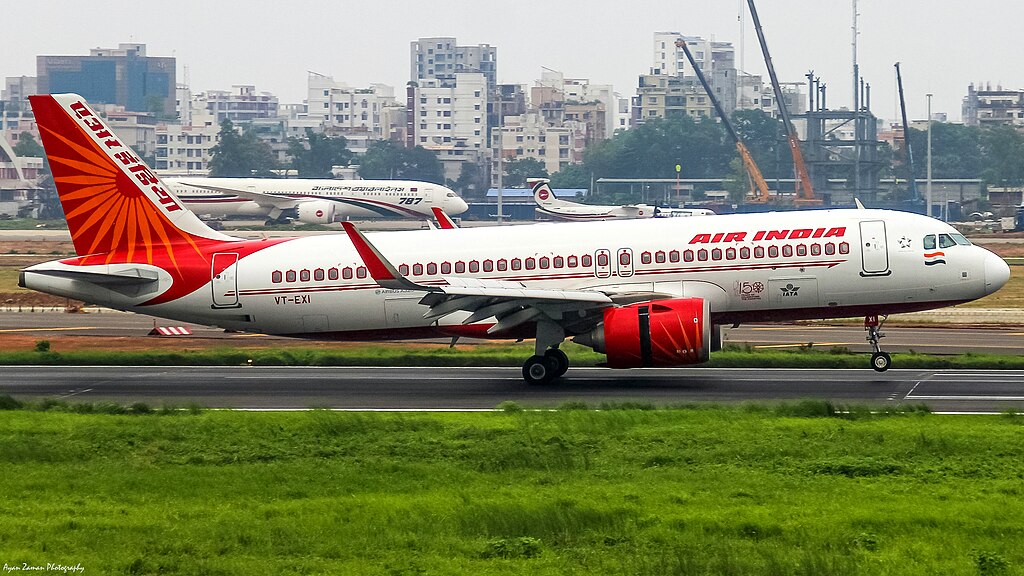
Photo: Md Shaifuzzaman Ayon | Wikimedia Commons
Air India is one of the largest airlines in the country, It serves 84 domestic and international destinations. Air India has total of 381 aircraft, if we were to include its historic and current fleet. According to the Planespotters, this is the Current fleet of Air India are
| Aircraft Type | Current |
| Airbus A319 | 6 |
| Airbus A320 | 98 |
| Airbus A321 | 27 |
| Airbus A350 XWB | 6 |
| Boeing 777 | 27 |
| Boeing 787 Dreamliner | 34 |
| Total | 198 |
Apart from this, being a member of Star Alliance, Air India can serve more than 710 destinations globally by sharing its airspace. This oldest airline in India was once very famous for its luxury. But in the last 20–30 years, there has been a significant decline in its quality, due to which it had incurred debt of more than $3.61 billion USD.. A report published in 2022 posited the following figures:
” The airline had a total debt of $7.43 billion USD as of August 31, 2021. Of this, the Tata Group took over $177.48 million USD and the rest 75 per cent or around $5.53 billion USD was transferred to a special purpose vehicle, AI Asset Holding Ltd (AIAHL). AIAHL also held Air India’s non-core assets such as stake in Hotel Corp of India (HCIL), paintings and artifacts and immovable properties.”
It is widely perceived that it is unable to compete with new airlines like Indi Go and Vistara., with even comedians poking fun at the services of the carrier. How have the services of the flag carrier of India declined so much in the last few years has its own interesting story, for which we will have to trace its origins, and how its evolution has shaped its present form.
Before Independence (1910s–1947):The First Flight in India

Photo: SDASM Archives | Wikimedia Commons
The first commercial flight in India (piloted by Henry Pecke) was operated on 18 February 1911. This flight took place when Indi was still under the control of the British empire. This flight covering only 99.7 km between Allahabad and Naini was carrying 6,500 mail pieces in a Humber biplane.
A year later, Indian State Air Services, in collaboration with Imperial Airways (a British airline operating between London and Delhi), started the country’s first international flight using a Handley Page W8 aircraft (capacity of 15 passengers). These small planes had 450 horsepower engines, and completing the route between Delhi and London required multiple stops.
Air travel was quite expensive at the time, so only the super-rich could afford it. In 1915, Tata Sons started the first air mail service between Karachi and southern India. Seeing this development, the construction of the first civilian airports began in 1924 in cities like Calcutta, Allahabad, and Bombay, and it is this route that led to the development of iconic airports like Delhi, an aerodrome which is one of the busiest in the world.
Establishment of the Directorate General of Civil Aviation (DGCA)
The government established the Directorate General of Civil Aviation (DGCA) in 1946. After that, they set up the Aero Club of India, which became an exclusive club for wealthy aviation enthusiasts and this led to the formation of popular clubs such as the following (in the 1920s and 1930s):
- Delhi Flying Club at Safdarjung Aerodrome
- Bombay Flying Club at Juhu Aerodrome
- Madras Flying Club at Madras Airport between the 1920s and 1930s.
JRD Tata, now known as the Father of Indian Civil Aviation, personally flew the Puss Moth aircraft in 1932 to start his airline service. Here’s a snippet of India Today’s report on this historic flight:
“Karachi’s Drigh Road Aerodrome and Mumbai’s Juhu Airstrip witnessed India’s first-ever flight. It was single-engined and carried 25 kg of 4-anna airmail letters. In 1932, Tata Air Services also launched a domestic flight to carry passengers and mail, operating from Bombay to Trivandrum with a six-seater Miles Merlin monoplane. In the beginning, passengers had to travel while sitting on top of the mail bags. During Tata Air Services’ first year of operation, it flew 257,495 km and carried a total of 155 passengers, along with transporting over 10 tonnes of mail. For the inaugural flight, the then Tata Group head wore a pair of goggles and carried his blue-gold aviator’s certificate with ‘a silent prayer’ at heart. “
Tata was able to launch this service after securing a contract from Imperial Airways to transport mail. This led to the birth of Tata Sons’ aviation division. Apart from the single-engine De Havilland Puss Moth, their fleet also included the Leopard Moth. Initially, they operated a weekly airmail service.
Meanwhile, on 8 October 1932, the Indian Air Force was also established as an auxiliary force of the Royal Air Force. In 1933, the IAF commissioned its first squadron with four Westland Wapiti aircraft and five Indian pilots. Around the same time, Indian National Airways also started operations.
First passenger flight of Tata Airlines
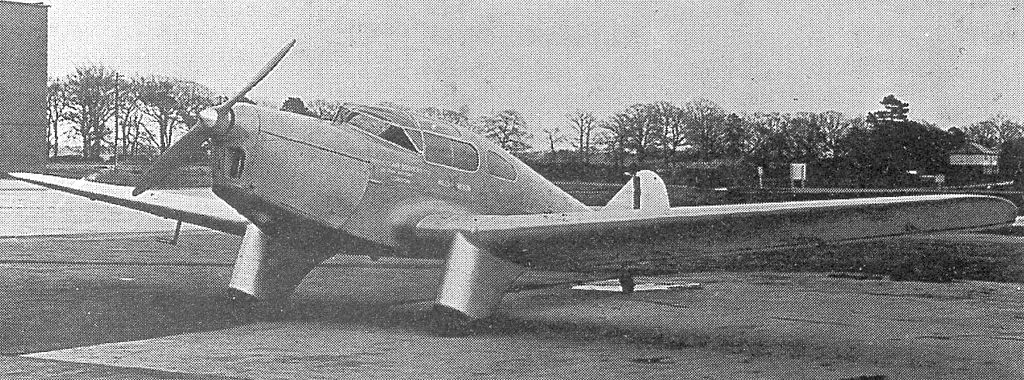
Photo: TSRL | Wikimedia Commons
Tata Airlines launched its first domestic passenger flight from Bombay to Trivandrum using a six-seater Miles Merlin aircraft. Here are a few snippets of its history that followed:
- The airline was rebranded as Tata Airlines in 1938.
- Launched their first international flight to Colombo (in a nation that houses the world’s emptiest airport) and expanded to new domestic destinations like Delhi.
- Exceptional services and customer satisfaction skyrocketed their profits tenfold.
In 1940, Hindustan Aeronautics Limited (HAL) was set up in Bangalore to manufacture India’s first aircraft. By 1941, India also had its first aircraft maintenance facility. Apart from the Indian Air Force, commercial airlines like Tata Airlines and Deccan Airways also got their planes repaired here.
Transitioning from Tata Air to Air India after the end of the Second World War
During World War II, Tata Airlines saw a decline in passenger traffic which led them to focus their energy to help Royal Air Force in essential wat activities such as:
- Transportation of troop transport
- Refugee evacuations
- Supply of deliveries
Many airports in India were taken over by the Air Force for ammunition storage and troop movements. After the war ended, commercial flights resumed in the Indo-Pacific theater. In July 1946, Tata Airlines changed its name and launched an IPO, becoming a public limited company under the name Air India. The ownership structue of the airline changed too – almost half of it was owned by the government (49%).
Independence & Nationalization (1947–1966)
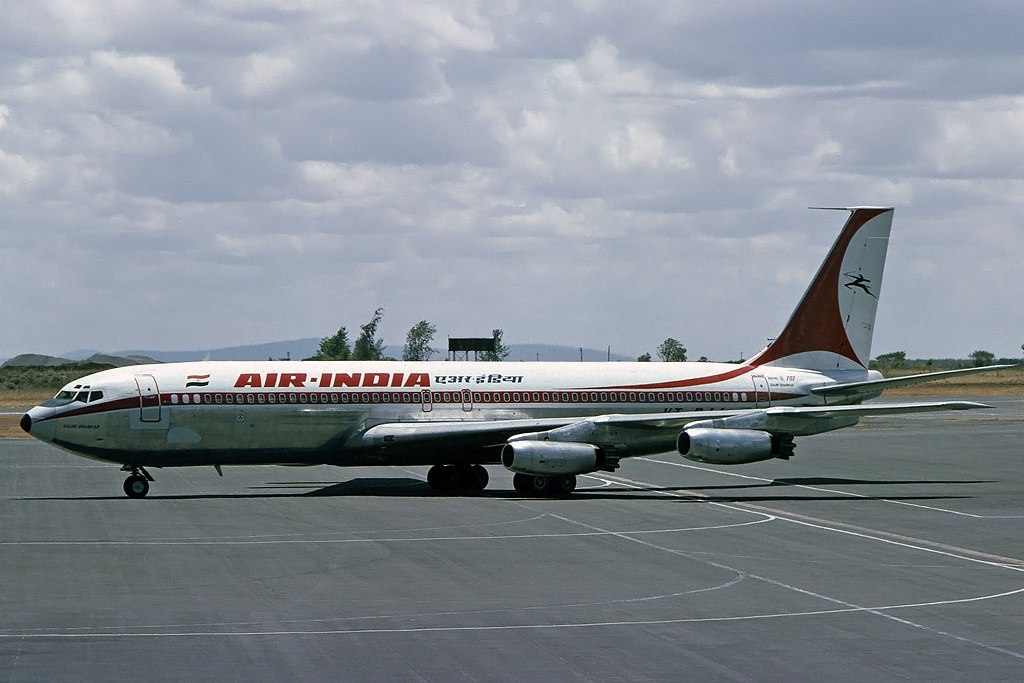
Photo: Steve Fitzgerald | Wikimedia Commons
Due to socialist policies that India had adopted after its independence from the British rule, the government started nationalizing private airlines. This led to the Indian Parliament passing the Air Corporations Act in 1953. This led to a merging of eight independent domestic airlines:
- Airways India
- Air Services of India
- Air India
- Bharat Airways
- Deccan Airways
- Himalayan Aviation
- Indian National Airways
- Kalinga Airlines
into two government-owned entities:
- Indian Airlines for domestic and regional routes
- Air India for international flights
Although JRD Tata tried to convince Prime Minister Nehru (who was his close friend) against nationalizing Air India, but Nehru did not change his stance. By 1957, the airline was renamed Air India International Limited. It began serving new destinations such as Nairobi, Kenya, and European cities like Rome, Paris, and Düsseldorf. The airline started operating the Constellation L-1049 aircraft.
Jet aircraft were introduced in commercial aviation in 1960, and Air India became the first Asian airline to fly a jet—a Boeing 707-420 named “Gauri Shankar.” [Gauri Shankar is also the name of a mountain range of the Himalayas in Nepal ]. This made Air India the first Indian entity to fly a jet globally. Popular international flight meant that the mascot of Air India’s, the Maharaja (which was created in 1946 by Air India’s commercial director Bobby Kooka and artist Umesh Rao ) became a global emblem. The word “maharaja” translating as “The King of Kings”.
In 1962, the airline shortened its name to Air India and purchased new jets. The company gradually phased out the older aircraft, making Air India the world’s first all-jet airline. TimesNowNews said that this step took ” a gigantic step for the nation’s economy and “wanderlust”.”
First big accident of Air India

Photo: Roger McDonald | Wikimedia Commons
However, in 1966, a major tragedy shook the nation. Air India Flight 101, flying from Bombay to London, crashed near Mont Blanc, killing all 128 passengers and 11 crew members. The aircraft, a Boeing 707 named “Kanchanjunga,” was piloted by Captain Jyoti D’Souza. According to the Aviation Safety Network the probable cause of the accident included:
-
The pilot-in-command, who knew on leaving Beirut that one of the VORs was unserviceable, miscalculated his position in relation to Mont Blanc and reported his own estimate of this position to the controller; the radar controller noted the error, determined the position of the aircraft correctly and passed a communication to the aircraft which, he believed, would enable it to correct its position.
-
For want of a sufficiently precise phraseology, the correction was mis-understood by the pilot who, under the mistaken impression that he had passed the ridge leading to the summit and was still at a flight level which afforded sufficient safety clearance over the top of Mont Blanc, continued his descent.
In 1971, Air India upgraded its fleet by ordering Boeing 747-200B aircraft. The first aircraft, named ‘Emperor Ashoka,’ featured the ‘Palace in the Sky’ livery, complementing the airline’s Maharaja mascot. J.R.D. Tata’s passion and determination kept Air India a world-class airline despite high-profile accidents.
How the bad phase of Air India started
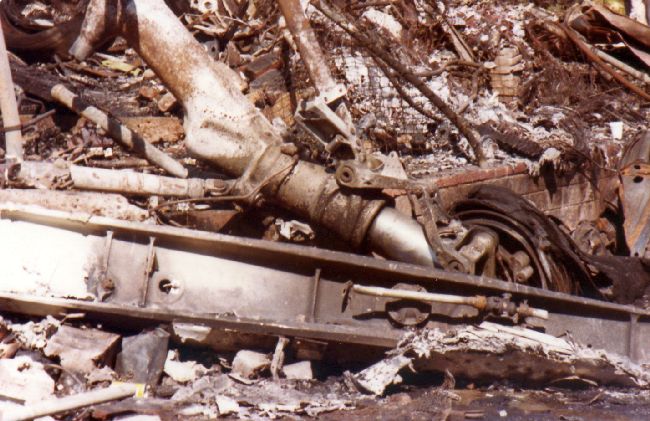
Photo: San Diego Air and Space Museum Archive | Wikimedia Commons
Over the years, Air India was considered a leading global airline. However, its decline began in 1977 when Prime Minister Morarji Desai asked J.R.D. Tata to resign as chairman. Under Indira Gandhi’s leadership, Tata had enjoyed support, but following her electoral defeat, tata was forced out. Without Tata’s charismatic (and often a perfectionist’s dedication to his craft) leadership, Air India started to decline. Indira Gandhi’s handwritten letter to Tata solidifies this claim:
“Air India must be as sad at the parting as you yourself. You were not merely chairman but the founder and nurturer who felt deep personal concern….It was this and the meticulous care you gave to the smallest detail, including the decor and the saris of the hostesses, which raised Air India to the international level and indeed to the top of the list”
Throughout the 1980s, Air India’s service quality deteriorated. The airline faced multiple accidents and terrorist attacks. One of the worst incidents occurred in June 1985, when Air India Flight 182 was bombed over the Atlantic Ocean near Ireland, resulting in the deaths of all onboard.
Y.C. The board appointed Deveshwar as chairman in the early 1990s. While he made the airline profitable, they soon removed him. Bureaucratic leadership failed to steer the airline effectively, causing financial struggles. In 1993, Air India introduced the Boeing 747-400, named ‘Konark,’ launching its first non-stop flight from Delhi to New York.
Liberalization & Merger (1991-2018)

Photo: Dylan Agbagni (CC0) | Wikimedia Commons
Following India’s economic liberalization, discussions about re-privatizing Air India began. By the early 2000s, the airline had massive debt and was nearing bankruptcy. The government attempted to sell Air India multiple times but found no buyers due to its liabilities. In 2001, Air India’s Managing Director Michael Mascarenhas was accused of corruption, citing financial losses due to excessive commissions.
In 2004, Air India launched its low-cost subsidiary, Air India Express, to provide affordable international connectivity. Until 2007, Air India focused on long-haul international flights, while Indian Airlines managed domestic and short international routes. However, with the rise of low-cost carriers, Air India expanded operations. Here are a few numbers that reflect the carrier’s struggle between 20017 and 2015:
- In 2007, the government merged Air India and Indian Airlines under Air India Limited.
- The merger led to financial losses that grew from 77.7 billion in 2007 to 200 billion by 2009.
- Air India was forced to sell three Airbus A300s and one Boeing 747-300 for 0.5 billion to address the financial losses.
- In 2013, it sold and leased back Boeing 787 Dreamliners (an aircraft that operates on the third longest one-stop route in the world as well as the third longest non-stop route in the world) to improve cash flow.
Despite cost-cutting measures, by 2011, Air India’s debt reached 426 billion, prompting a government bailout. In 2012, the government infused 200 billion, helping streamline operations. In 2014, Air India joined Star Alliance, the world’s largest airline alliance.
Privatization & Tata (2018-2024)
In March 2018, the government attempted to sell a 76% stake in Air India Express and a 50% stake in AI SATS but found no buyers. After multiple failed attempts, the government decided to sell a 100% stake in Air India, writing off outstanding dues.
In 2020, Tata Sons and Ajay Singh’s SpiceJet consortium expressed interest in acquiring Air India. In October 2021, Tata Sons purchased Air India for 80 billion regaining control after 69 years. The acquisition included Air India Express and AI SATS.
In 2022, Natarajan Chandrasekaran, chairman of Tata Sons, appointed Campbell Wilson as Air India’s CEO and MD. Tata consolidated Air India, Air India Express, AirAsia India, and Vistara into two entities: a full-service carrier (Air India) and a low-cost carrier (Air India Express). AirAsia India was fully acquired and rebranded as AIX Connect. Singapore Airlines, which held a 49% stake in Vistara, retained a 25% stake in the merged entity.
Restructuring & Growth (2023-Present)
In 2023, Air India placed an order for 470 new aircraft at the Paris Air Show, the largest aircraft order in history. The order, worth approximately 695.5 million USD, included:
- 210 Airbus A320 family aircraft
- 40 Airbus A350s
- 190 Boeing 737 MAX
- 20 Boeing 787-9s
- 10 Boeing 777-9s
Air India Express received the Boeing 737 MAX order, focusing on connecting smaller Indian cities, while Air India concentrated on long-haul international routes. Air India introduced premium economy seating, improved customer service, and updated its branding, incorporating deep red, orange, and gold hues. New revenue streams included express light fares, which charged extra for check-in baggage.
Market Share & Future Prospects
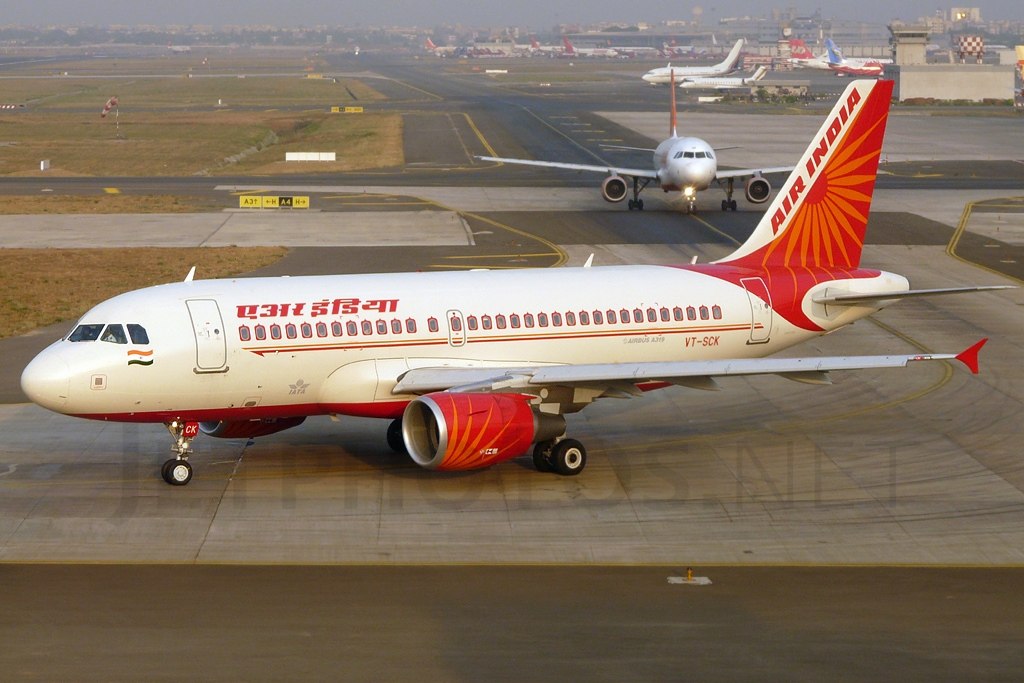
Photo: Sean D Silva | Wikimedia Commons
Today, Air India operates a fleet of 128 narrow and wide-body aircraft and is India’s largest international carrier with an 18.6% market share. In the domestic market, its market share is second to Indi Go (63.3%), ahead of Vistara (7.1%), SpiceJet (4.4%), and Akasa Air (4.2%).
India is now the third-largest aviation market after the U.S. and China, with annual air traffic exceeding 150 million passengers. This number is expected to double in the next 10-15 years. Boeing projects a demand for over 1,700 aircraft in India, valued at over $240 billion.
While major airlines like Indi Go, Air India, Vistara, and Akasa Air dominate, many Indian cities still lack adequate air connectivity. Expanding infrastructure, particularly in cities with populations over a million but limited airport access, remains a challenge. Despite economic slowdowns and competition, Air India’s privatization and restructuring under Tata have set the airline on a path of revival, focusing on profitability, service excellence, and global expansion.
